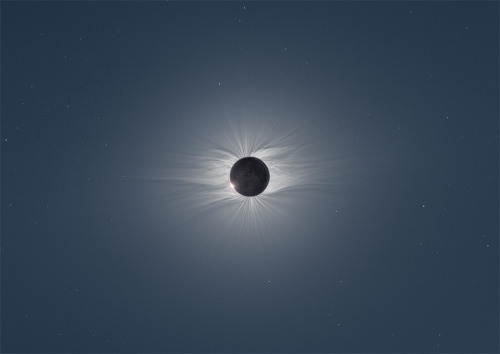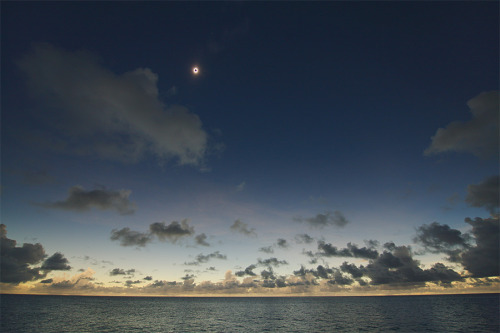Fae Rogue
Fae rogue

I’m a demon arcanist and I’m okay with that.
More Posts from Maevetheeuropan and Others

That looks pretty damn cool.
(via The World’s First ‘Marschitect’ Is Laying the Groundwork for Architecture in Space — How We Get To Next)

NASA Is Considering A Deep Sleep Option for Mars Mission Crew
A NASA-backed study is exploring an innovative way to dramatically cut the cost of a human expedition to Mars — put the crew in stasis.
The deep sleep, called torpor, would reduce astronauts’ metabolic functions with existing medical procedures. Torpor also can occur naturally in cases of hypothermia.
“Therapeutic torpor has been around in theory since the 1980s and really since 2003 has been a staple for critical care trauma patients in hospitals,” aerospace engineer Mark Schaffer, with SpaceWorks Enterprises in Atlanta, said at the International Astronomical Congress in Toronto this week. “Protocols exist in most major medical centers for inducing therapeutic hypothermia on patients to essentially keep them alive until they can get the kind of treatment that they need.”
Coupled with intravenous feeding, a crew could be put in hibernation for the transit time to Mars, which under the best-case scenario would take 180 days one-way.
So far, the duration of a patient’s time in torpor state has been limited to about one week.
“We haven’t had the need to keep someone in (therapeutic torpor) for longer than seven days,” Schaffer said. “For human Mars missions, we need to push that to 90 days, 180 days. Those are the types of mission flight times we’re talking about.”
Impressive Payoffs
Economically, the payoff looks impressive. Crews can live inside smaller ships with fewer amenities like galleys, exercise gear and of course water, food and clothing. One design includes a spinning habitat to provide a low-gravity environment to help offset bone and muscle loss.
SpaceWorks’ study, which was funded by NASA, shows a five-fold reduction in the amount of pressurized volume need for a hibernating crew and a three-fold reduction in the total amount of mass required, including consumables like food and water.
Overall, putting a crew in stasis cuts the baseline mission requirements from about 400 tons to about 220 tons.
“That’s more than one heavy-lift launch vehicle,” Schaffer said.
The Big Chill
The study looked at a two-part system for putting Mars-bound astronauts in stasis and bringing them out. The cooling would be done through an internasal system, which Schaffer admits is “not very comfortable,” but inhaling a coolant has several advantages over reducing body temperatures with external cooling pads. Cooled from the outside, the body is more susceptible to shivering and possible tissue damage, Schaffer notes.
The so-called RhinoChill System lowers body temperature about 1 degree Fahrenheit per hour. Reaching torpor state — between 89 degrees and 93 degrees Fahrenheit — takes about six hours.
Simply stopping the flow of coolant will bring a person out of stasis, though the SpaceWorks study included rewarming pads as a backup and to speed up the waking process in case of an emergency.
An alternative to having the whole crew in stasis is to have one person awake for two to three days, then hibernate for 14 days. By staggering the shifts, no one person would be in stasis for more than 14 days at a time and one crewmember would be awake to monitor the ship, conduct science experiments and handle maintenance chores.
Schaffer also points to a potential psychological advantage to stasis.
“Rather than being stuck in a can for 180 days, you go to sleep, you wake up and you’re there,” he said. More research is needed to assure prolonged stasis is safe, but initial results are promising, Schaffer added.
“We have not seen any show-stoppers on the medical side or on the engineering side,” he said.

Ice is no match for CSU-developed coating
Anyone who’s ever chipped ice off a windshield or nervously watched a plane get de-iced, take note: Colorado State University researchers have invented an ice-repellent coating that out-performs today’s best de-icing products.
Researchers led by Arun Kota, assistant professor of mechanical engineering and biomedical engineering, have created an environmentally friendly, inexpensive, long-lasting coating that could keep everything from cars and ships to planes and power lines ice-free.
Their innovation, described in the Journal of Materials Chemistry, is a gel-based, soft coating made out of PDMS (polydimethylsiloxane), a silicone polymer gel with already widespread industrial use. Their experiments were supported by careful analysis of ice adhesion mechanics.
The performance measure of de-icing coatings is called ice adhesion strength - the shear stress necessary to remove ice from a surface - and is measured in kilopascals (kPa). Kota’s group demonstrated ice adhesion strength for their coating of about 5 kPa. By contrast, soft coatings available on the market have ice adhesion strength of about 40 kPa (lower is better). Other types of de-icing coatings made of rigid materials like Teflon typically perform at around 100 kPa.
Read more.

Yeeeeeeeeees!
I am filled with such excitement!

When Japan began to rebuild after the 2011 earthquake and tsunami, artist Manabu Ikeda started a massive pen & ink piece. He worked 10 hours a day, 6 days a week, for 3.5 years before finishing ‘Rebirth’, a 13x10 foot drawing of a tree rising from chaos and ruin. Source Source 2



NASA Wants Deep Space Habitat Ideas
How will humans live on Mars? Well, NASA’s not really sure yet, but if you’ve got any ideas you can submit them now. The agency has just put out a call for proposals for “deep space habitation prototypes.”
from NASA’s press release:
NASA is soliciting proposals for the development of prototypes for deep space habitats that will give astronauts a place to call home during long-duration missions supporting the agency’s Journey to Mars.
-
 angelofstarlight reblogged this · 1 month ago
angelofstarlight reblogged this · 1 month ago -
 morningmoonkaweii reblogged this · 5 months ago
morningmoonkaweii reblogged this · 5 months ago -
 cthulhu-cat reblogged this · 5 months ago
cthulhu-cat reblogged this · 5 months ago -
 l0rddraven liked this · 5 months ago
l0rddraven liked this · 5 months ago -
 awkward-octopus reblogged this · 5 months ago
awkward-octopus reblogged this · 5 months ago -
 lhosae reblogged this · 5 months ago
lhosae reblogged this · 5 months ago -
 lhosae liked this · 5 months ago
lhosae liked this · 5 months ago -
 smallme liked this · 7 months ago
smallme liked this · 7 months ago -
 jdarklink liked this · 7 months ago
jdarklink liked this · 7 months ago -
 vivimeiometro liked this · 1 year ago
vivimeiometro liked this · 1 year ago -
 lizalaforet liked this · 1 year ago
lizalaforet liked this · 1 year ago -
 gsans4547 reblogged this · 1 year ago
gsans4547 reblogged this · 1 year ago -
 hydrangeahelper reblogged this · 1 year ago
hydrangeahelper reblogged this · 1 year ago -
 fangirl39 liked this · 1 year ago
fangirl39 liked this · 1 year ago -
 benbemine liked this · 1 year ago
benbemine liked this · 1 year ago -
 lasanga95 reblogged this · 1 year ago
lasanga95 reblogged this · 1 year ago -
 lasanga95 liked this · 1 year ago
lasanga95 liked this · 1 year ago -
 cheeseburgerdanvers liked this · 1 year ago
cheeseburgerdanvers liked this · 1 year ago -
 shyrose57 liked this · 1 year ago
shyrose57 liked this · 1 year ago -
 parroetrakcitib liked this · 1 year ago
parroetrakcitib liked this · 1 year ago -
 orckissingchampion liked this · 1 year ago
orckissingchampion liked this · 1 year ago -
 sr-8eep5 liked this · 1 year ago
sr-8eep5 liked this · 1 year ago -
 thefutureprimitives liked this · 1 year ago
thefutureprimitives liked this · 1 year ago -
 noigemajea liked this · 1 year ago
noigemajea liked this · 1 year ago -
 bohobedlove liked this · 1 year ago
bohobedlove liked this · 1 year ago -
 daydreamingaway12 liked this · 1 year ago
daydreamingaway12 liked this · 1 year ago -
 svvy2003 liked this · 2 years ago
svvy2003 liked this · 2 years ago -
 ferra-itt reblogged this · 2 years ago
ferra-itt reblogged this · 2 years ago -
 falcontheartist liked this · 2 years ago
falcontheartist liked this · 2 years ago -
 cyber-vampyr liked this · 2 years ago
cyber-vampyr liked this · 2 years ago -
 rudolphsb9 reblogged this · 2 years ago
rudolphsb9 reblogged this · 2 years ago -
 anxiousscreenwriter reblogged this · 2 years ago
anxiousscreenwriter reblogged this · 2 years ago





